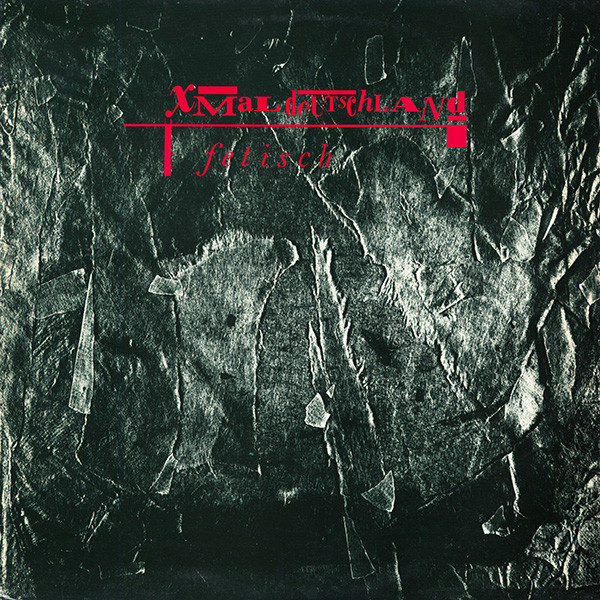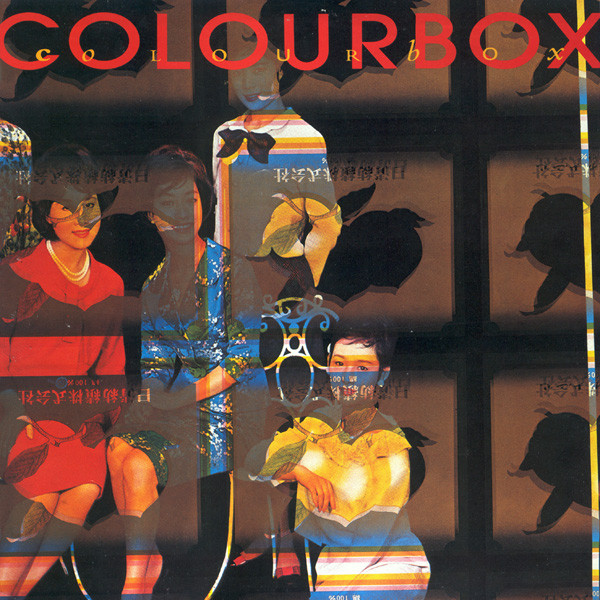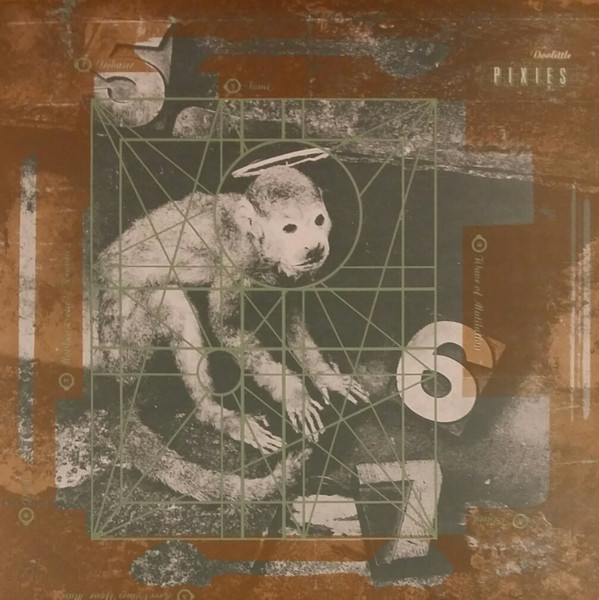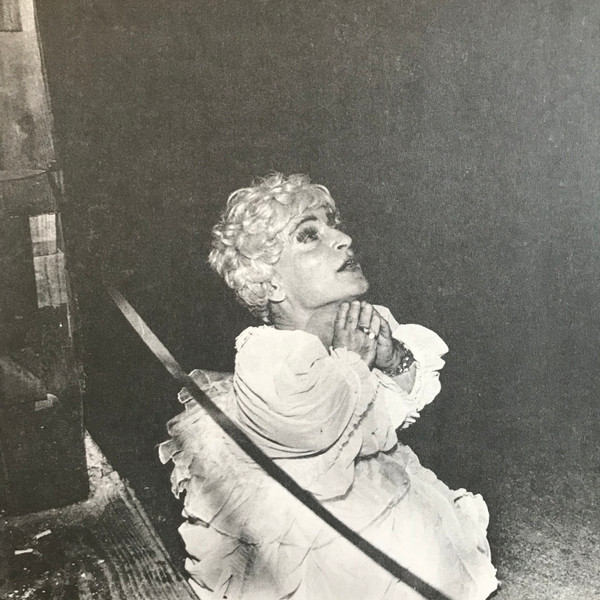The Essential Records That Defined 4AD’s First Decade
A look back at the first decade of 4AD, where groundbreaking sounds and iconic artwork redefined the boundaries of alternative music.
Certain independent record labels enshrine an aesthetic. They might pioneer bands working on the perimeters of alt-rock, like Sub Pop. They champion the sound of a city over an epoch-making time, like Motown. And there are others, of course: Stax, Definitive Jux, etc. But it’s rare for a label to build themselves a reputation for releasing consistently incredible alternative music, beautifully produced, and presented and packaged with the sort of artwork that wouldn’t look out of place in a gallery. 4AD is one such imprint.
Founded by Ivo Watts-Russell and Peter Kent in London in 1980, the pair started 4AD after Watts-Russell had been working as a producer for the Beggars Banquet imprint, itself a burgeoning post-punk empire. Kent left the label after a year, and Watts-Russell continued to plug into British music fans’ keenness to continue riding the wave of punk’s explorative energy. Watts-Russell envisioned a label that worked in the round, a trusted base for sophisticated experimentation in music and aesthetics. Along with his gimlet eye for signing acts of unearthly abilities, he brought in producers, session musicians, and visual artists to help realize his vision. The art angle was largely covered off by graphic designer Vaughan Oliver and photographer Nigel Grierson. Their design company, 23 Envelope, manifested 4AD’s ethereal and other-worldly musical output in visual form, creating a long series of graceful, phantasmal artwork.
While Watts-Russell sold his half of 4AD to Beggars Banquet and retired from the music industry in 1994, 4AD continues in his spirit, and today is home to the likes of Tune-Yards, Dry Cleaning, and Future Islands. 4AD celebrates its forty-fifth anniversary this year, and the albums listed below celebrate its first decade, a period that saw the imprint release an astonishing run of albums that continue to tunnel their way into the psyche of modern music.
Bauhaus
In The Flat Field (1980)
Released shortly after their mighty horror-dub single, “Bela Lugosi’s Dead,” Bauhaus’s debut album is an object lesson in goth rock. With the Cure and Siouxsie and the Banshees already covering themes of isolationism and darkness, In The Flat Field joined the wake with melodramatic abandon.
Lead singer Peter Murphy delivers doom-laden declarations while guitarist Daniel Ash unleashes an ice-cold, splintering glam racket, driven by David J’s thundering bass and Kevin Haskins’ pounding drums. Murphy yells, “I get bored. I do get bored,” capturing the hectic ennui of the album’s title track. Meanwhile, “Double Dare” pulses oozes with paranoia through its stop-start rhythm, and “The Spy in the Cab” creeps forward over Haskins’ eerie electronic drum bleeps. A masterpiece in new wave and goth rock, the record has become synonymous with 4ADs murky image.
The The
Burning Blue Soul (1981)
By age 20, Matt Johnson was already a known figure in London’s underground music scene. Performing with a rotating band made up of various friends, The The supported Scritti Politti, and Johnson produced a number of demos under the name before signing to 4AD. He continued (and continues) to record as The The, and his debut record, Burning Blue Soul, is a distillation of tracks Johnson put together in his spare time, along with a handful of songs recorded specifically for the album.
Originally released under Matt Johnson’s name in 1981, Burning Blue Soul was reattributed to his band, The The, at his request in 1993. The tone of the record fits suitably with ideas explored elsewhere on the 4AD roster – isolation, boredom, railing against disillusion – but Johnson added crushing takes on social norms to give the set a political angle. Fusing brutal lyrical honesty with fuzzed-out musical textures, Burning Blue Soul set the stage for the magnificent cynicism of future The The albums like Soul Mining, Infected, Mind Bomb, and others.
Cocteau Twins
Garlands (1982)
Xmal Deutschland
Fetisch (1983)
Sometimes things just fall into place. Like when the Cocteau Twins played London’s The Venue concert hall in 1982. In a move that now seems prescient, Xmal Deutschland opened the show. Naturally, Watts-Russell was in the audience. The contract they signed afterward led to Xmal Deutschland’s debut album, Fetisch.
Watts-Russell had already taken note of the band the previous year, seeing them as an ideal addition to the 4AD roster. All the signature elements were there: dark tonal palettes, clanging, fuzzed-out guitars, and lead singer Anja Huwe’s quasi-monotone yet urgent vocal delivery. Fetisch is unmistakably post-punk in its attitude, steeped in Cold War tension and echoing a time before the Berlin Wall fell. The opening track, “Qual,” seethes and trembles as Huwe intones, “My day is your twilight,” followed, chillingly, by “I’ll murder you.”
Dead Can Dance
Dead Can Dance (1984)
This Mortal Coil
It’ll End In Tears (1984)
In essence, It’ll End In Tears served as a label showcase — a gateway for new listeners to experience what 4AD had been cultivating over the previous four years. Overseen and produced by Ivo Watts-Russell, This Mortal Coil functioned as a fluid collective of 4AD artists, sometimes collaborating, sometimes operating solo. It’ll End In Tears is the first in a trilogy of albums that documented these exploratory sessions.
The Cocteau Twins, having brought in bassist and keyboardist Simon Raymonde in 1983 to replace Will Heggie, contributed four Raymonde compositions to the album, including the ambient instrumental “Barramundi,” which waded in the Cocteau’s celestial aesthetic. Elsewhere, Lisa Gerrard’s “Waves Become Wings” acts as a moment of suspended time, while the haunting cover of Tim Buckley’s “Song to the Siren,” performed by Robin Guthrie and Elizabeth Fraser, remains one of 4AD’s most iconic tracks. Following It’ll End In Tears, the collective returned for two more full-length efforts: Filigree & Shadow in 1986 and Blood in 1991.
Colourbox
Colourbox (1985)
As the 4AD label moved forward, Watts-Russell recruited his empire’s first steadfastly electronic act. Revolving around the Young brothers, Martyn and Steven (with various other contributors arriving and leaving), Colourbox drew influences from Motown, early Chicago house and Jamaican roots reggae and dub. Thus, their debut self-titled album is a cool grab-bag of danceable nuggets, including a twinkling version of U-Roy’s “Say You” track and a stomping electro take on the Supremes’ “You Keep Me Hangin’ On,” with vocals from Lorita Grahame in both cases.
The Young brothers’ open-minded approach to new electronic music wasn’t lost on Watts-Russell. In 1987, he encouraged them to collaborate with dream pop inventors, A.R. Kane. The outcome, a double A-sided single released under the name of M|A|R|R|S, included “Pump Up the Volume,” one of the most important singles of the late twentieth century. Although there was a short flurry of singles soon after, Colourbox was to be the brothers’ only album.
Throwing Muses
Throwing Muses (1986)
Like many 4AD signings, it started with the voice. Singer and guitarist Kristin Hersh’s shuddering delivery — sometimes whispery, sometimes nearing a scream – loomed large on the demo tape Throwing Muses sent to 4AD. Hersh formed the group with her stepsister Tanya Donelly (other vocals and lead guitar) in 1983 and, two years on, they made it to the studio.
Although Throwing Muses sounded nothing like them, Watts-Russell admired the production work English producer Gil Norton had carried out for China Crisis and Echo & the Bunnymen, and he called him in to produce the band’s self-titled debut album. The result is a blistering, artfully-designed album of alternative rock that brought in another new direction in genre for 4AD. Originally from Newport, Rhode Island, the band relocated to Boston the year before their debut was released. The first American act to sign to the 4AD label, Throwing Muses was one half of the twin attack leading the charge across the ocean from Boston to the U.K.
Pixies
Surfer Rosa (1988)
In the pantheon of impactful band managers, Ken Goes often gets overlooked. However, it was Goes who introduced the Pixies to 4AD. Already managing Throwing Muses, Goes had caught the growing respect for the Pixies in the Boston music scene and sent Watts-Russell the band’s demo tape. Known by fans as the Purple Tape, eight of the songs on the demo made their to the Pixies’ 4AD 1987 debut release, the Come On Pilgrim E.P. Released a year later, with the venerable Steve Albini as sound engineer, the Pixies’ first full-length album, Surfer Rosa, went seismic.
Singer and rhythm guitarist, Black Francis, the band’s pivotal force and main songwriter, hurled forth of curdling screams and yaps. Kim Deal (bass and backing vocals, credited as Mrs John Murphy), David Lovering (drums), and Joey Santiago (virtuosic lead guitar) supported the blood-rushing pace or dialed it down to zero when required required. Surfer Rosa didn’t just set the tone for the Pixies’ legacy, it also reshaped the sound of underground rock for the decade to come.
Pixies
Doolittle (1989)
More Biblical treachery. More tales of fiery hell, violence, and debasement. Just one year after Surfer Rosa, the Pixies returned with a new album. Gil Norton’s work with the Throwing Muses (and some Surfer Rosa re-recordings) earned him a production recall, and Doolittle found the Pixies in further expansive form.
Largely, Doolittle took up where Surfer Rosa left off; another unsettling mix of mangled surfer twangs, Wagnerian quiet-then-loud bits, and skewed, maniacal pop. Sung by drummer David Lovering, “La La Love You” is a dingbat croon and the release of album tracks “Here Comes Your Man” and the monumental “Monkey Gone To Heaven” as singles proved that the Pixies could trouble the mainstream charts while satisfying the loyal fans who had been there right from the start.
Released in 2009, the limited edition Minotaur boxset deserves a mention here. Containing the Pixies’ first five albums (on vinyl and CD) and a DVD of their videos and a 1991 live concert, the box encapsulates the 4AD artwork ethic that Ivo Watts-Russell held so dear. Along with the audio-visual formats, the box also comes with Pixies-related photos, posters and a book, all created especially by 23 Envelope’s Vaughan Oliver.
The Breeders
Pod (1990)
Formed as a side project by Kim Deal and Tanya Donelly in 1989, the Breeders’ debut album was every bit as good as Pixies and Throwing Muses fans had hoped it would be. Another Steve Albini engineering project, Pod allowed Deal to show the full power of her songwriting abilities. The result is a standout set from the early 90s alt-rock canon — an album that drips with honey and venom.
Deal’s vocals are every bit as warm yet plaintive as they are on the Pixies’ track “Gigantic,” and the album left many (including Kurt Cobain) wondering why she hadn’t been given more freedom in her day job band. By 1992, Donelly had left both the Breeders and Throwing Muses to form her own band, Belly. The Breeders remain a going concern, and Deal remains loyal to the 4AD label. Her long-awaited debut solo album, Nobody Loves You More, was released on the label in 2024.
you might also like
-
-
-
-
-
-
Dragon New Warm Mountain I Believe In YouBig Thief2022Rock, Folk, World, & Country2 x Vinyl, Randomly Colored
-
-
-
-
KEEP DIGGING
Don’t miss a beat
Subscribe to Discogs’ email list to learn about sales, discover music, record collecting guides, product tips, limited edition offers, and more.

























